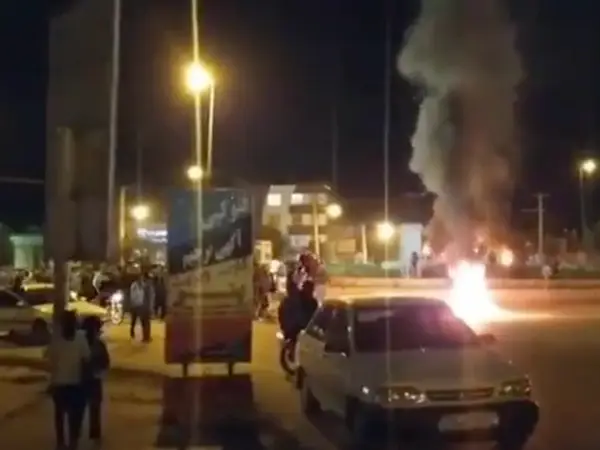Reports say security forces killed two more protesters in Iran's ongoing anti-government protests that spread to more small towns and cities on Saturday.
So far three of the five protester deaths have been reported in small towns of the largely rural Chahar Mahal and Bakhtiari in western Iran. Protests of this scale are unprecedented in three small towns of the province which is one Iran's least developed and poorest.
One of the deaths was reported in Babaheydar, a town of around 11,000 on Saturday evening when security forces opened fire on dozens of protesters. According to social media reports, people who chanted against the rule of clerics, attacked the Revolutionary Guards (IRGC) local Basij militia headquarters in Babaheydar during their protests. Photos of a father of two, Behrouz Eslami, has been circulating on social media with reports that he was shot in the chest by a local IRGC officer.
A young man, Saadat Hadipour, was also reportedly killed by security forces in Hafshajan, a town of 22,000 in the same province. According to social media reports he was shot from the local Basij Militia building in the town which protesters attacked and tried to enter.
The third protester killed earlier in the province was Hamid Ghasempour. He was a resident of Farsan, a town of 30,000. There is a video that allegedly shows him after being shot in the head while other protesters chant "We Will Kill Those Who Killed Our Brother".
Protests that began in the southwestern province of Khuzestan over a week ago against a massive hike in food prices first spread to Iran's western provinces and on Saturday to the east as unrest was reported in Neyshabour.
Economic chaos continues in the wake of a government decision to stop subsidizing food imports. Long queues in front of bakeriesthat sell the traditional flatbreads and at supermarkets and shops for chicken and cooking oil are now a common sight in many cities. In some cases, bakeries have restricted the number of bread loaves they sell to meet the demand as they say their flour supplies are limited.
The government says it will compensate for the price increases by paying 90 percent of Iranians a monthly cash subsidy for the time being and will later substitute it with ration cards for cheap staples. The first instalment of the monthly 400,000 rial ($13) subsidy has already been paid into people's bank accounts.
The price of oil used in production of canned foods, for instance, has risen by sixfold and affected many foods. The tenfold increase in the price of flour has also pushed up the cost of pasta, a staple food for many lower-income families who cannot afford to buy rice.
Some protestswere reported Saturday evening in southeast Tehran in Shahrak-e Karevan (Razavieh) district where protesters also chanted anti-government slogans. The area is largely inhabited by lower-income families. In the rest of the capital Tehran and most other large cities heavy presence of security forces kept a heavy presence in the streets.
